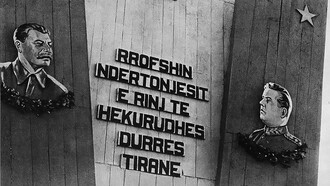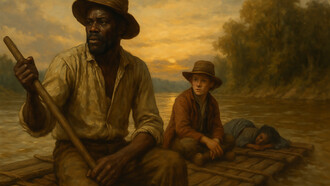Foreigners who come to Britain and only visit the hot spots - London, Stratford-on-Avon, Edinburgh, Bath, Stonehenge, etc - rarely appreciate that its rural countryside is perhaps the most diversely beautiful and astonishingly preserved of any nation on earth. True, it has no spectacular alpine peaks, vast forest tracts, or raging torrents. However, within its mere ninety thousand square miles are contained some of the most sublime soaring hills, languorous lakes, and idyllic pastures to be found anywhere. This is not only due to its hugely diverse topography, mild maritime climate, and fiercely protected landscapes but also to its history. Since ancient times the British have been intensive farmers, aided by their moderate climate and rich soil. This long tradition of loving husbandry has over the centuries produced aesthetically impressive panoramas like nowhere else - majestic yet intimate, domesticated yet natural, accessible yet constantly varied. One factor, in particular, has shaped the British land and also its history, perhaps more than any other. This is something that most people nowadays, even the British themselves, are largely unaware of. It is the extermination within the island's shores during the medieval era of the wolf.
In ancient times wolves were the biggest enemy of all large animals. They were voracious hunters of anything that moved on four legs, the meatier the better. Wild beasts such as deer, foxes, horses, etc, were often difficult to catch, but contained domestic animals were much easier prey. For mankind the most valuable of these were sheep these were hardy, easy to reproduce and control. They provided meat, milk, and clothing. However, because of the prevalence of great hunting wolf packs across Europe, it was impossible to maintain large sheep flocks. They had to be corralled and guarded round the clock in modest numbers. But Britain – especially England – started to get on top of the problem during the twelfth and thirteenth centuries. The land owners, the aristocracy, and the king himself organised huge culls countrywide. The exercise provided the thrill of the hunt and bounty money, as well as the preservation of the flocks. Over a hundred years and more, the wolf population was virtually extinguished. This allowed the great expansion of sheep populations all across the green and pleasant land.
The rest of Europe couldn’t match Britain, because the wolf packs marauding from the vast forests of Russia and the Baltic states were just too numerous. And in any case, their sheep species couldn’t compete with the fine wool-producing breeds that thrived in the UK's temperate climate. Britain became the wool producer of the world, clothing people from Scandinavia to Arabia, and exporting pure wool to the cloth makers of Flanders and Florence. Britain then also had to create a merchant fleet to transport the magic stuff around. Then an armed navy to protect those ships from pirates and enemy assaults and a sophisticated banking structure to handle all the business side of things. The whole system spread across the land. Your average sheep farmer became a man of means, and the large landowner a tycoon. And almost every historic building in Britain, from cathedrals and stately homes to mills and manor houses, was financed by the wealth produced from wool. Which also incidentally created the hundreds of enchanting historic villages which now proliferate around the most picturesque regions.
Ultimately it was all of this that, over the centuries, drove the culture of invention and exploration that eventually produced the Industrial Revolution, which in its turn led to the creation of the largest empire the world has ever seen.
The gradual evolution of the rural lands, led by the proliferation of sheep farming, has produced the unique English countryside - evoked by painters, poets and composers in an endless cascade of artistic output. It is distinguished by its contained verdant meadows, meandering hedgerows, a profusion of wildflowers and magnificent trees, mossy dry-stone walling (five thousand miles in Yorkshire alone), and its one hundred and thirty thousand miles of steadfastly protected country footpaths. The British landed gentry reign over some of the most celebrated parklands on the planet, many fashioned by the famous Capability Brown. And in contrast, as anyone who has visited the Scottish Highlands knows, there exists some of the world's most ruggedly wild scenery with no sign of human presence anywhere. All of this has had a huge influence, conscious or unconscious, on the British national character.
Although Great Britain is a densely populated and developed place compared to other western nations, it is still, believe it or not, well over ninety per cent 'non-urbanised' (even accounting for the huge network of roads and railways). Viewed from above around 98% of the land appears green. Green in a countless number of shades. Green, benign and glowering, shimmering and still, motley and smooth. Even the inhabited areas contain large emerald spaces. Every village has its 'green' and its celebrated English country gardens, every town has its own recreational parks, and every city has its verdant squares and playing fields. London ranks amongst the greenest capital cities on earth, its parks, squares and gardens comprising over a third of the urbanised area. The Royal Parks alone contribute almost five thousand acres, and its public heaths and commons many thousands more.
However, none of these can compare with the sweeping landscapes of Daphne du Maurier's Cornwall, Emily Brontë's Yorkshire moors, Wordsworth's Lake District, R.S. Thomas's Welsh mountains, or the rolling hills of Thomas Hardy's Dorset. Much of this lovely territory is protected as green belts, 'areas of natural beauty ', or National Trust land. However, the increasing demands for housing, shopping malls and business parks are forever threatening to encroach on such regions. One can only hope that the British population's traditional love of their countryside will stem the tide, but King Canute's ghost is never far away.
Perhaps the Union Jack should really have been green, white and blue - incorporating the colour of grass instead of blood.
I have always loved landscapes, and the sense of romance, history, and natural beauty they invoke. I celebrate one of the most magnificent, the Yorkshire Dales, in my latest novel, The Land, The Land. It concerns a farmer's obsessive love for his land, which leads him into a fight, almost to the death, against forces which threaten to ruin it. It is on the surface a psychological thriller, but underneath also a plea for the preservation of a world seriously threatened by the relentless growth of modern technology and population demands. It is true that, since my migration to warmer climes, I no longer spend as much time wandering the British rural scene as I did during my younger peripatetic days. However that scene is still deeply imprinted upon my consciousness, and I would be immeasurably depressed to think that it could gradually be lost, never to be experienced by future generations.















